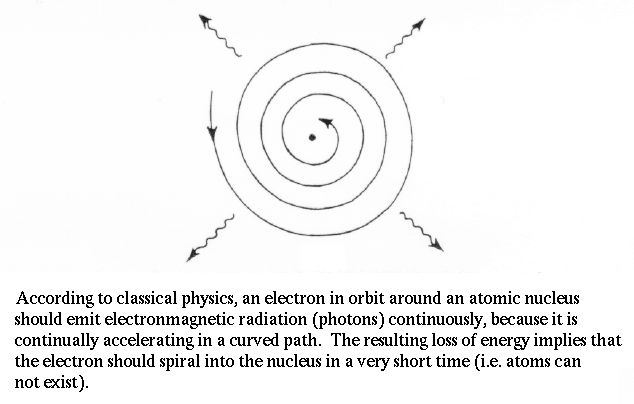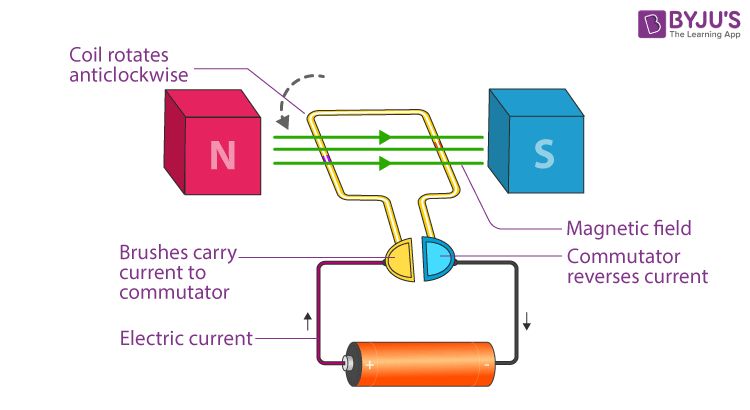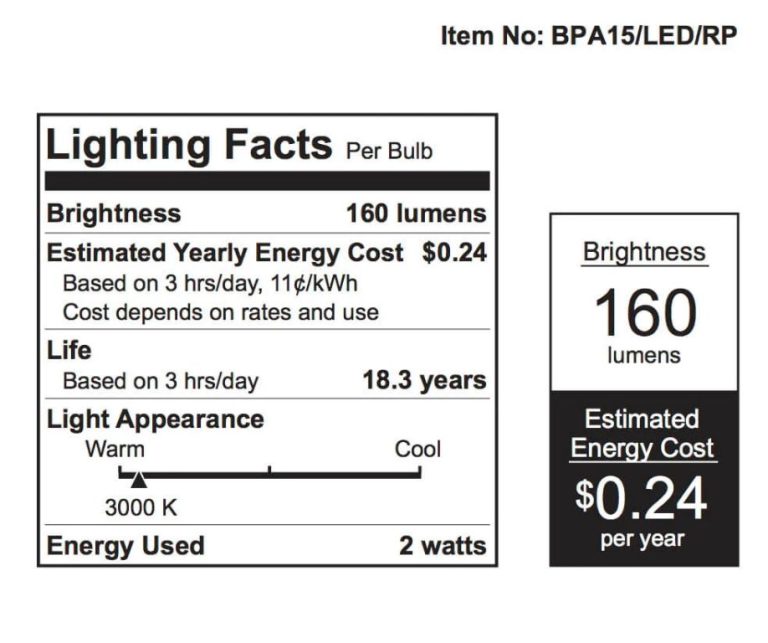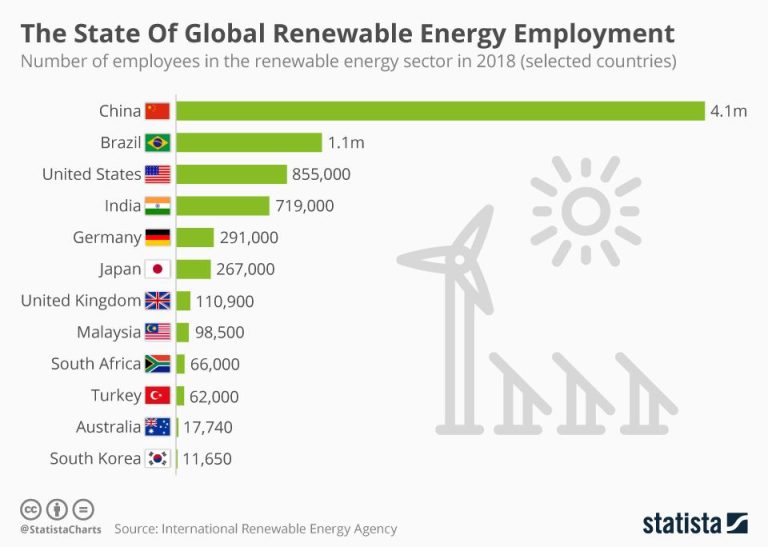What Is A Flow Of Electrically Charged Particles Called?
What is a Plasma?
A plasma is a quasineutral gas of charged and neutral particles that exhibits collective behavior. Plasmas consist of free moving electrons and ions that respond strongly to electromagnetic fields. They are typically formed by heating a gas or subjecting it to a strong electromagnetic field to ionize its atoms or molecules. Plasmas are sometimes referred to as the fourth state of matter, distinct from gases, liquids and solids.
Plasmas are the most common state of matter in the universe and make up more than 99% of the visible universe. They are found naturally in stars, lightning bolts, auroras, solar wind and the Earth’s ionosphere. On Earth, plasmas can also be artificially generated by heating gases or subjecting them to strong electromagnetic fields. Some examples of artificial plasmas include those found in fluorescent lights, plasma TV screens, tokamaks for fusion energy research, and plasma jets used for material processing.
In space, plasma occurs in stars, accretion disks, solar wind, Earth’s magnetosphere and interstellar medium. The extremely high temperature of stars creates a plasma state. Supernova explosions scatter stellar plasma across the universe. Plasma filaments connect galaxies over enormous cosmic distances as part of the cosmic web.
Properties of a Plasma
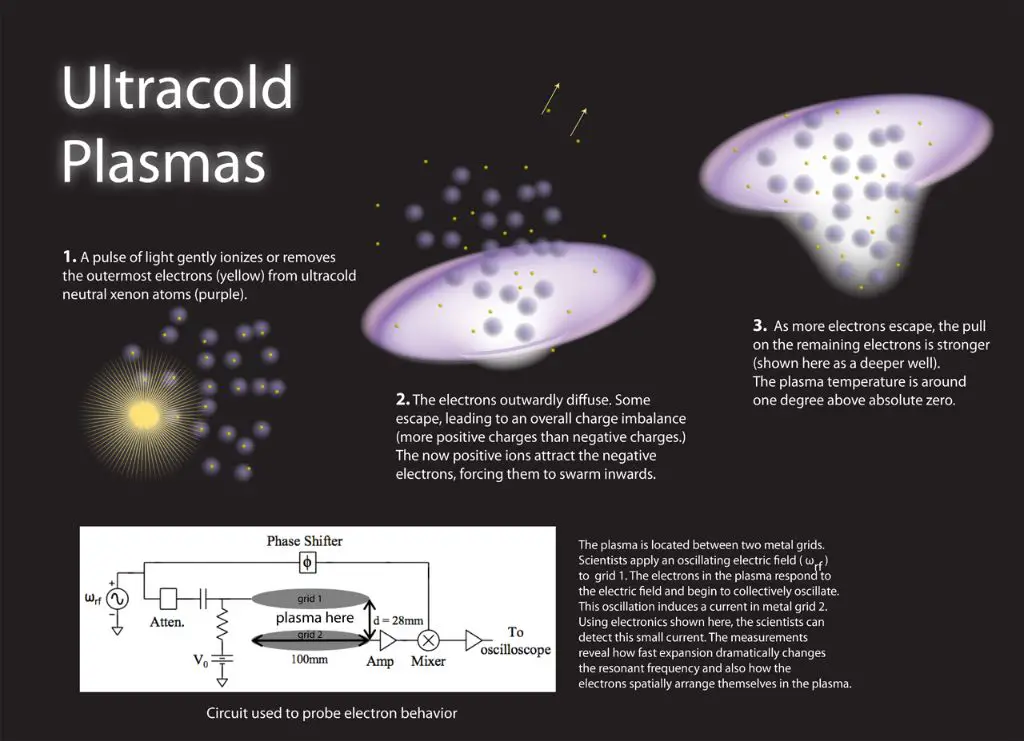
Plasmas have unique properties that distinguish them from ordinary gases. Some key properties include:
Temperature – Plasmas typically have very high temperatures, often reaching thousands or millions of degrees. The kinetic energy of the charged particles in a plasma is much higher than in a gas.
Density – Plasma densities can vary widely, from only a few charged particles per cubic centimeter in interstellar space to over 1020 particles per cubic centimeter in laboratory plasmas. Dense plasmas have high frequency collisions between particles.
Degree of Ionization – Plasmas are highly ionized with the ions and electrons accounting for more than 1% of the particles. The degree of ionization refers to the percentage of atoms that have lost electrons to become positively charged ions.
Collective Behavior – Unlike gases, plasmas exhibit collective behavior with charged particles responding to long-range electromagnetic fields. This allows plasmas to generate and be affected by electric and magnetic fields over large distances.
How Plasmas Form
Plasmas can form in a few different ways. One way is by heating a gas to extremely high temperatures. Heating causes the atoms in the gas to vibrate and move faster. As the gas gets hotter, the increased kinetic energy causes the electrons to break free from their atoms, creating a sea of free-moving electrons and positively charged ions. This is how stars like our sun create plasma through their intense internal heat.
Plasmas can also form by applying a strong electromagnetic field to a gas. The electromagnetic field accelerates the electrons, giving them enough energy to escape the pull of the positively charged nuclei. This is how scientists create plasma in laboratories, through devices like tokamaks which use powerful magnetic coils to contain and heat the plasma.
Exposing a gas to high-energy radiation like X-rays, gamma rays, or cosmic rays can also strip electrons from atoms and cause ionization. Radiation naturally ionizes the gases in space, forming plasmas like the ionosphere of Earth’s upper atmosphere. High-energy radiation can create plasma in the laboratory as well.
Important Concepts in Plasma Physics
Plasmas exhibit unique behaviors and properties due to their ionized state. There are several key concepts that are important for understanding the physics of plasmas:
Debye Shielding
Because plasmas contain freely moving charged particles, they exhibit a phenomenon called Debye shielding. This refers to the ability of plasmas to shield out electric potentials. The Debye length is the distance over which significant charge separation can occur – beyond this distance, plasmas act to neutralize electric fields and smooth out potential differences.
Plasma Frequency
The plasma frequency is the natural frequency at which plasmas oscillate. It depends on the density of electrons in the plasma. The plasma frequency determines important characteristics like the plasma’s dielectric response and how it interacts with electromagnetic waves.
Plasma Parameters
Key parameters used to describe plasmas include the temperature, density, and degree of ionization. Plasma particles have a distribution of velocities described by a temperature. The density refers to the concentration of particles. The degree of ionization specifies the fraction of neutral vs. ionized particles. These parameters help determine the collective behaviors of plasmas.
Collective Behavior
One of the defining characteristics of plasmas is the collective behavior that emerges from the interactions between the charged particles. Unlike an ordinary gas, plasmas exhibit long-range electromagnetic interactions between the charged particles. These long-range Coulomb forces result in collective, coordinated motions of the plasma particles.
Two key concepts that describe the collective behavior of plasmas are quasineutrality and plasma oscillations.
Quasineutrality refers to the characteristic that plasmas have approximately equal numbers of positive and negative charges over a given volume. This means that at macroscopic scales, plasmas are overall electrically neutral. However, at smaller scales, there can be charge imbalances that give rise to electric fields and ambipolar diffusion of charges. Quasineutrality is what allows plasmas to have collective behavior – the charges can move together over long distances rather than being confined by their nearest neighbors.
Plasma oscillations refer to the synchronized oscillations of the electrons and ions in a plasma. When a local charge imbalance occurs, it creates restoring forces that cause the charges to oscillate back and forth at the plasma frequency. These plasma oscillations play an important role in wave propagation, energy transport, and heating mechanisms in plasmas.
By considering the long-range Coulomb interactions and resulting phenomena like quasineutrality and plasma oscillations, we gain key insights into the complex collective behaviors exhibited by plasmas.
Types of Plasmas
Plasmas can be categorized into different types based on their temperature and density characteristics:
Hot Dense Plasmas
Hot dense plasmas have very high temperatures (millions of degrees Kelvin) and high density. They are fully ionized with the ions and electrons in thermodynamic equilibrium. Examples include fusion plasmas produced in tokamak reactors and plasmas created during nuclear explosions.
Warm Dense Plasmas
Warm dense plasmas are at lower temperatures (thousands to tens of thousands of degrees Kelvin) and have densities comparable to solids or liquids. They are partially ionized with the ions interacting strongly. Astrophysical objects like giant planet interiors exhibit warm dense plasma behavior.
Nonthermal Plasmas
Nonthermal plasmas have low densities and are not in thermodynamic equilibrium. The ion temperature is much higher than that of electrons and neutrals. They exhibit nonequilibrium properties useful for various applications. Examples include plasmas used for materials processing and lighting.
Dusty Plasmas
Dusty plasmas contain charged micrometer-sized dust particles in addition to electrons, ions, and neutral particles. The dust particles acquire high charges and interact strongly with each other. These plasmas occur in space environments and also have industrial applications.
Plasma Applications
Plasmas have many useful applications in various fields including energy, manufacturing, lighting, and medicine.
Fusion Energy
One of the most promising applications of plasma is in fusion energy. Fusion involves fusing light atomic nuclei to form heavier ones and release enormous amounts of energy in the process. Scientists use magnetic confinement to control extremely hot plasmas and initiate fusion reactions. Major experimental fusion reactors around the world harness the power of plasmas to work towards realizing fusion as a clean, sustainable energy source.
Plasma Etching and Deposition
Plasma etching, which involves using chemically reactive plasma to remove materials, and plasma-enhanced chemical vapor deposition are widely used in the semiconductor industry. Plasmas allow for precisely etching or depositing layers just atoms thick during microchip fabrication.
Fluorescent and Arc Lighting
Plasma lighting applications take advantage of the light emitted from ions and electrons when they recombine. These include fluorescent lighting and arc lamps used in video projectors.
Plasma Medicine
Cold atmospheric plasma shows promise for medical uses like sterilizing wounds and surgical tools, promoting wound healing, and selectively killing cancer cells.
Plasmas in Space
Plasmas are ubiquitous in space. The solar wind consists of charged particles streaming outwards from the Sun through the solar system. This solar wind interacts with the magnetic fields of planets to create complex magnetospheres around them. Bright nebulae shine from the light emitted by ionized gases heated by nearby stars. And the interstellar medium between stars contains diffuse plasma, albeit at very low densities.
The solar wind originates from the extremely hot corona of the Sun. As the plasma expands rapidly outward, it blows open the Sun’s magnetic field lines to fill the solar system. The solar wind plasma carries the Sun’s magnetic field along with it, creating the interplanetary magnetic field that extends through the heliosphere. This plasma interacts with planetary magnetospheres and atmospheric plasmas such as the ionosphere.
Planets like Earth, Jupiter and Saturn have strong intrinsic magnetic fields that deflect the solar wind plasma. The solar wind compresses the sunward side of these magnetospheres while elongating the night side into a magnetotail. Complex electric currents are induced in the process, potentially fueling auroras near the planets’ magnetic poles.
Gaseous nebulae consist of large clouds of ionized interstellar gas. The Orion Nebula, for example, shines from the light emitted by plasma heated to 10,000 K by nearby young stars. Supernova remnants like the Crab Nebula also produce bright nebulae as expanding shock waves sweep up surrounding gas into extremely hot and turbulent plasmas.
Even in the darkness of interstellar space, trace amounts of plasma exist. This interstellar medium is ionized by cosmic rays and can have temperatures ranging from 100 K to 10,000 K depending on region and altitude above the galactic plane. Though diffuse, these interstellar plasmas may help drive galactic magnetic fields through dynamo processes.
Plasma Instabilities
Plasmas can exhibit various types of instabilities that arise from their unique properties and dynamics. Instabilities occur when small perturbations or fluctuations in a plasma grow exponentially over time, leading to larger oscillations or turbulence.
Some common plasma instabilities include:
- Two-stream instability – Caused by two groups of charged particles streaming through each other, such as electrons and ions or two electron beams. The velocity difference between the streams causes growing oscillations and energy transfer between the beams.
- Weibel instability – Generated by temperature anisotropies, when one direction has higher temperatures than others. This drives growing magnetic fields and filamentation perpendicular to the hotter direction.
- Rayleigh-Taylor instability – Occurs when a dense plasma rests on top of a light plasma in a gravitational field. The interchange of the two layers results in mushroom-like structures.
- Kelvin-Helmholtz instability – Develops when two fluids or plasmas slide past each other with different velocities. This creates vortices and turbulence at the interface.
Understanding and controlling plasma instabilities is crucial for fusion energy and many other applications. Instabilities can enhance transport, turbulence, and radiation losses, so mitigating their growth through magnetic confinement, optimized shaping, and other techniques helps improve plasma performance and stability.
Active Plasma Research
Plasma physics is an exciting and dynamic field with many innovative research projects underway around the world. Here are some of the cutting-edge areas where plasma physicists are pushing boundaries:
Fusion energy research – Developing fusion power as a clean, abundant energy source is a major goal for plasma physics. Researchers use magnetic confinement in tokamaks and inertial confinement in facilities like the National Ignition Facility to pursue fusion breakthroughs.
Space and astrophysical plasmas – Plasmas occur naturally in space and the cosmos. Studies of solar wind, planetary magnetospheres, accretion disks, and stellar processes reveal more about the role of plasmas. Advanced probes and telescopes drive new discoveries.
Plasma medicine – Non-thermal atmospheric plasmas show promise for medical therapies, wound healing, bacteria inactivation, and other biomedical applications. More research is elucidating plasma interactions with cells and biological tissue.
Plasma nanotechnology – Using plasma discharges, scientists synthesize and process nanomaterials like carbon nanotubes, nanoparticles, and other structures. Plasmas offer fine control over nanoscale assembly.
Novel plasma sources – From microplasmas to terahertz plasmas, researchers are developing new customized plasma sources for materials processing, chemical analysis, microelectronics, and other areas.
As plasma expertise grows and technology matures, more game-changing applications will likely emerge. The future looks bright for plasma physics to continue revolutionizing science and technology through the 21st century.


